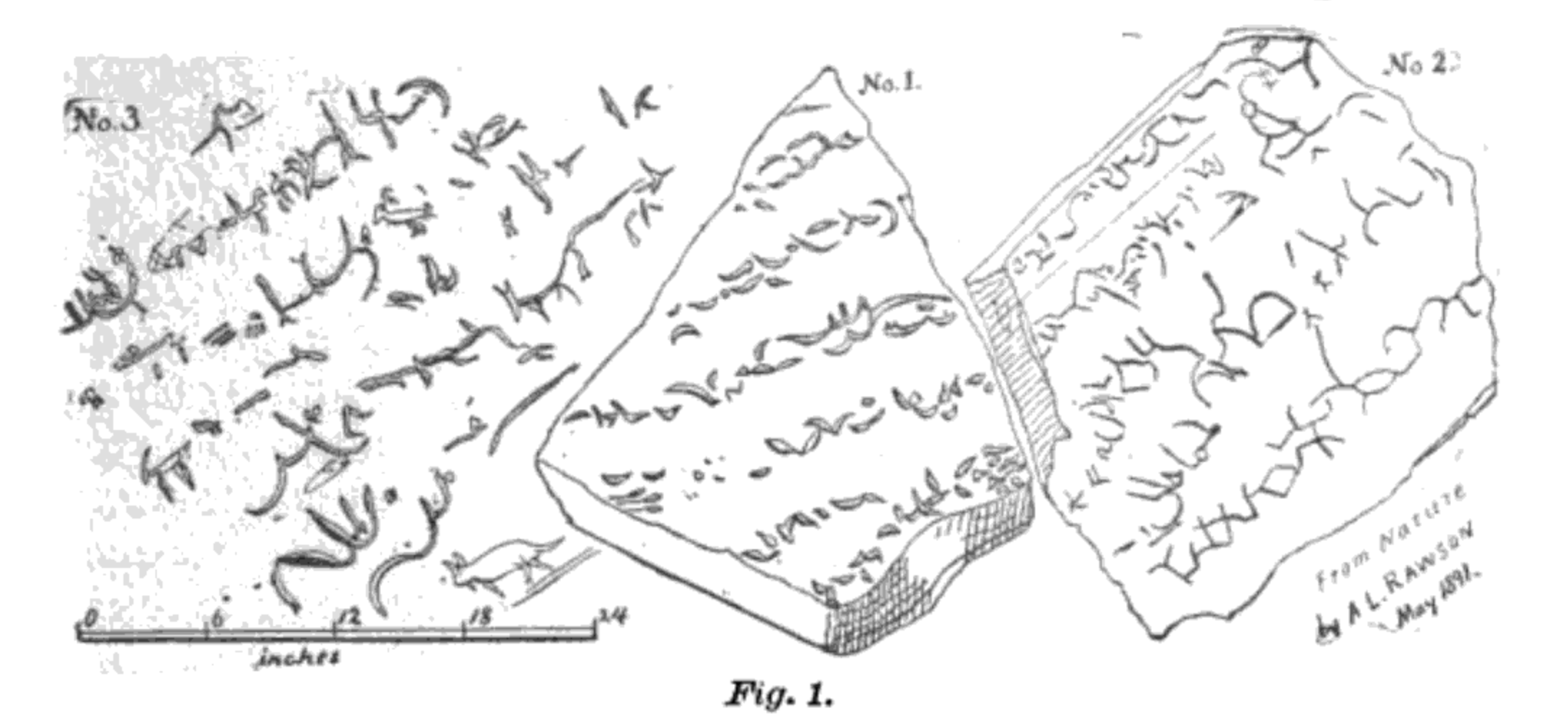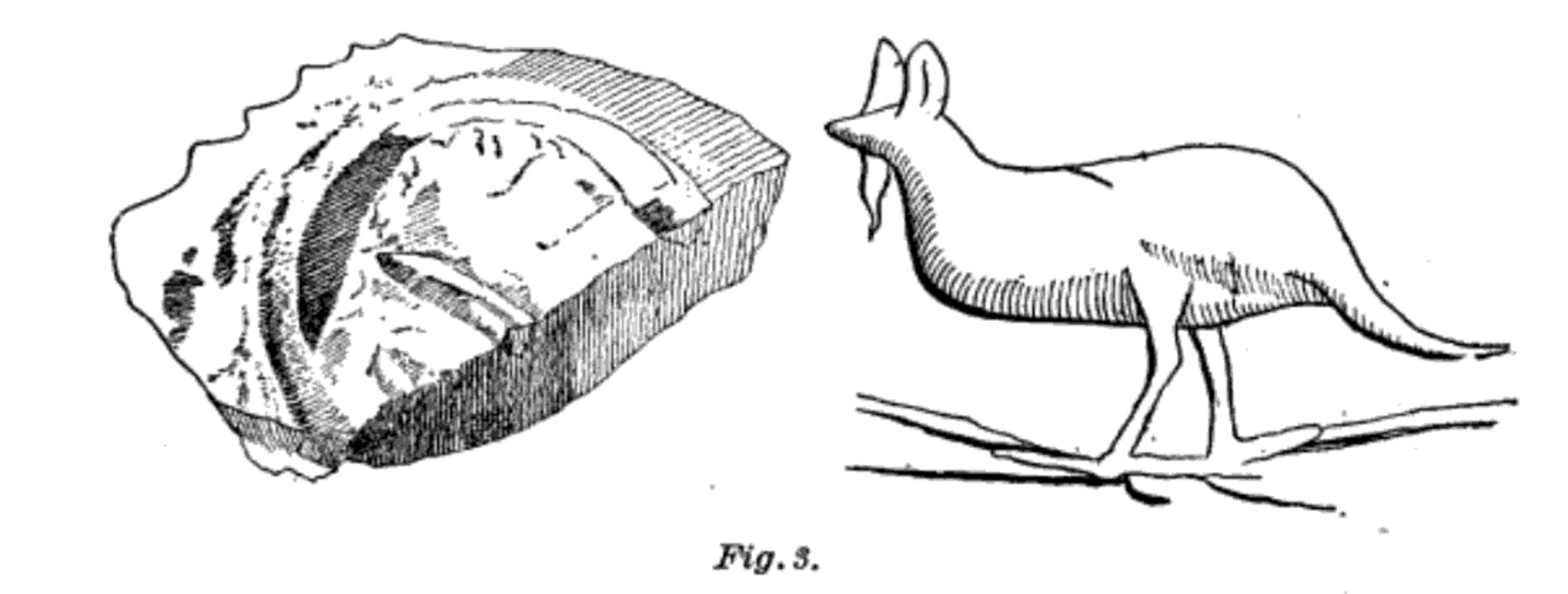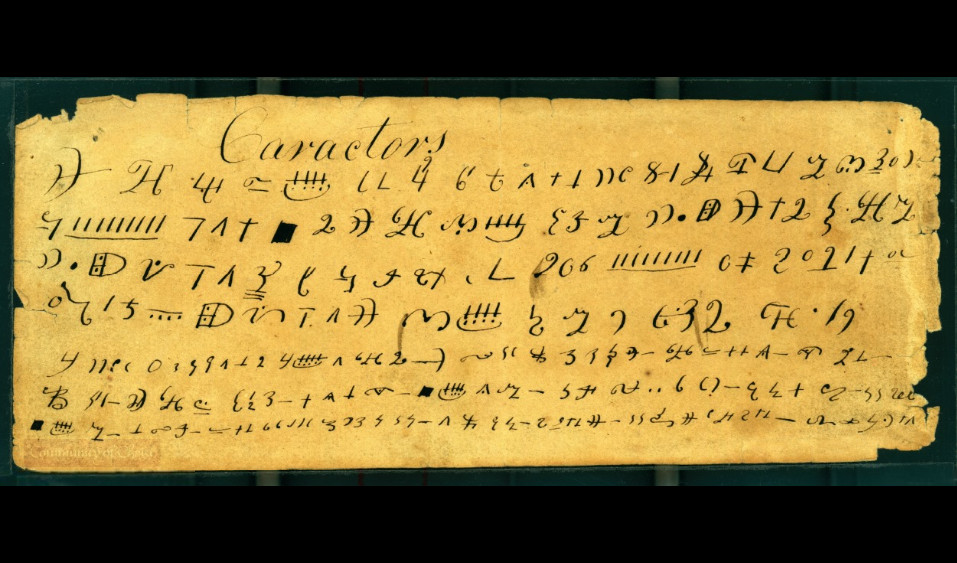I am republishing an article from The American Antiquarian originally written by A. L. Rawson entitled “The Ancient Inscription at Chatota Tennessee”. Link to original article is given below.
The Ancient Inscription at Chatota Tennessee
by A. L. Rawson
In March, 1891, the Cleveland (Tennessee) Express printed a short account of a discovery of a supposed ancient wall near that place. Mr. Carson, who wrote the article, had seen the stones and felt sure the marks on them are artificial.
I visited the place in May of that year, and made drawings, some of which are reproduced here, as also one from transcript made by Dr. J. Hampden Porter, of the Smithsonian Institute, Washington, D.C., who was there in the October following.
A cousin of Mr. Hooper carried me in a buggy from Cleveland, thirteen miles to Chatata, where Mr. J. H. Hooper, who found the wall on his farm, resides. We arrived late at his house and were entertained all night. After supper the stones were mentioned, and one they had at the house was shown me, and I transcribed the marks. In the morning six or eight more stones, about sixteen or eighteen inches across, and irregular in fracture and about ten inches thick, were shown, as they lay under a rude shed where the children at play could injure them.

Later we drove to the place, about a mile from the house, on a sandstone ridge that is at least twenty miles long, north to south, flanked by limestone east and west, ending at the south near the Tennessee river at Chattanooga.
As we neared the place we saw several places where a single stone had been dug out of the clay soil, and those stones occured at intervals of twenty-five or thirty feet for nearly one thousand feet. At the north end of the ridge the inscribed wall was found.
Mr. Hooper noticed first stone Fig. 1, which stood exposed a few inches above the ground and saw, what seemed to him, a figure 8, which he supposed was on a stone placed as some soldier’s grave. After digging it out in the hope of learning the name he was suprised to find some unreadable marks. Further exploration exposed a formation of brown or red sandstone in three thicknesses, upright, about ten inches each, and apparently cemented together, forming what seemed to be a wall, with an inscription on the middle course on its west side. The lines run diagonally, ascending towards the right, and one cut on the raised surface of narrow ridges or flutings, parallel but not exactly straight. The works are from one and a half to two and a half inches across, and are cut into the surface of the rock a quarter or an eighth of an inch, varying, not uniform in depth. These incisions are filled with cement, perhaps by natural deposit from the soil above. A few groups are of figures of birds, or of animals, three to six inches across.
Mr. J. Hampden Porter wrote me from Chatata, October 21: “This formation is not a wall, but a red sandstone ridge and faced with clay, red, slaty and yellow also, to an unknown depth. In uncovering the rock for a space of twelve by sixteen feet, no implements and no traces of previous excavation have been found.

Supposing the works were made there by some prehistoric people, five, ten, or more thousand years ago, all traces of former disturbance would have disappeared, unless some stone implements had been left; and such would have been too valuable to leave there. With regard to the characters themselves, it appears to me that they cannot be otherwise than artificial. On the basis of eight hundred and twenty-five signs I have found that by bringing together those that were alike, and in numerous instances identical, there is a recurrence of essential forms and fac similes which would show the chances in favor of their accidental origin to be almost infinitely small. See Fig. 2. If they be a true script it is in a transition phase, and nearer the ideographic than the pictorial stage of writing. Still the representations of animal forms and emblems belonging to peoples widely separated, geographically, certainly present themselves here.”
He recognizes the figure of the old and new moon, and of the “destroying quoit,” the thunder bird, serpent, etc., etc., “united in lines on the stones, with letter-like markings” in great variety. Mr. Porter also thinks there are torms like many Old World alphabets, which of course are accidental, for these marks may antedate the oldest–the Moabite, or even the Egyptian sacred text, or the Demotic script. I engrave here a copy of a line of the marks from his letter. Of them he says: “The figurings are more regular than the originals, but the forms are given truly.” Good photographs of the whole face of the tablet and of sections of it have been taken, which Mr. Duncan, of Chatata, can supply.
This inscription, whether it is on a wall or a ridge, is one of many evidences of a prehistoric people who were highly civilized on tis continent. Not far from this wall, on Jolly Island at the confluence of the Hiawassee with the Tenessee river, is a temple mound, which, Dr. Porter says, is build with mathematical precision. Another cyclopean wall is on Fort Mountain, in Murray county, Georgia, in the Appalachian chain. A spur juts out very precipitously on three sides, and has about one hundred acres on its top, cut off from the mountain by a wall fifteen hundred feet long, five feet thick and six feet hight, with many angles and curves, as if to command approaches. One opening is guarded by three towers.

Scholars will delight to compare the Chatata writings with those at Dighton, Mass., and also some altaic characters in the old world, such as the Hamath inscriptions.
The skeletons with copper masks, found in mounds near Chilicothe, Ohio, were evidently those of well-to-do people, for with them were found hundreds of thousands of pearls, some an inch or more in size.
Commentary from Brian Nettles
Comparison with the Caractors Document


Further research to be done by finding article “The Ancient Inscription on a wall at Chattatta Tennessee” published Transaction of the New York Academy of Sciences, November 9, 1891.